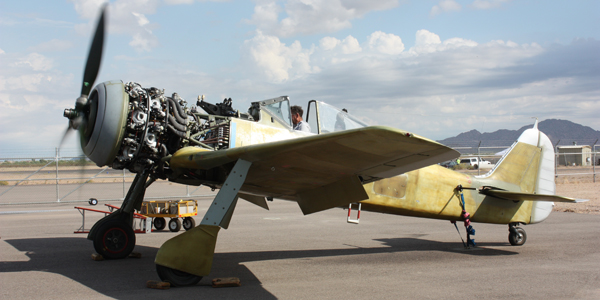
The first BMW 801–engine Focke-Wulf to fly since the 1950s is Paul Allen’s Fw-190A-5/U3, part of the ex-Microsoft billionaire’s Flying Heritage Collection
The warbird of the moment seems to be the long-neglected Focke-Wulf Fw-190, with a number of impressive restoration and replica-building projects underway or, in several cases, complete and flying. What none of the few flying Focke-Wulfs have, however, is an original BMW 801 radial engine. Some are equipped with Chinese-built copies of a Russian ASh-82 power plant, and at least two Fw-190D-9 replicas have upright Allison V-12s in place of that version’s Junkers Jumo inverted V-12. Another Fw-190 replica has already crashed, ditching in the Mediterranean just off a French beach due to the catastrophic failure of its near-new Chinese engine. A number of static exhibit museum 190s have BMW 801s, but few have been fired up and none will ever fly.
Some dismiss the 801 as “just a copy of the Pratt & Whitney Hornet,” which is at best a vast oversimplification. BMW indeed license-built Hornets before World War II, particularly for use in the elderly Junkers Ju-52 trimotor, but the Focke-Wulf’s engine is a far more advanced twin-row 14-cylinder rather than an 18, and it differs in many other ways from the Pratt that preceded it. Most notably, the 801 had a remarkable single-lever power control system that automatically managed rpm, prop pitch, mixture, timing and supercharger setting according to throttle position and altitude—a system that Porsche, not surprisingly, reinvented for its PFM Mooney lightplane engine in the mid-1970s. The big Kommandogerät controller at the heart of this system, as complex as a Swiss chronometer, is hen’s-tooth rare.
Kommandogerät and all, the first BMW 801–engine Focke-Wulf to fly since some forgotten occasion in the 1950s is Paul Allen’s Fw-190A-5/U3, part of the ex-Microsoft billionaire’s Flying Heritage Collection in Everett, Wash. The airplane had force-landed in Russia in 1943, possibly thanks to sabotage when the engine was built, by French forced labor, that eventually clogged a crucial oil line. The wreck was discovered in 1989 (check out this YouTube video of the find) and was retrieved by helicopter in 1991, taken to a buyer in England and acquired by Allen eight years later.
Much of the airframe restoration was done by the highly regarded English shop JME Aviation, which unfortunately closed earlier in 2010 and returned the ship to the U.S. for completion, currently in its final stages. The BMW engine was totally rebuilt by Mike Nixon in Tehachapi, Calif. Nixon is the country’s—and perhaps the world’s—preeminent restorer of WWII-era aircraft engines, at both his Vintage Radials and Vintage V12s divisions.
Many had feared that due to its rarity, Allen’s airplane would never be flown even after the restoration was complete. But the refurbished Fw-190 made its first flight on December 2, 2010, and the Flying Heritage Collection plans to display this unique Luftwaffe fighter in the air publicly for the first time this spring or summer.




